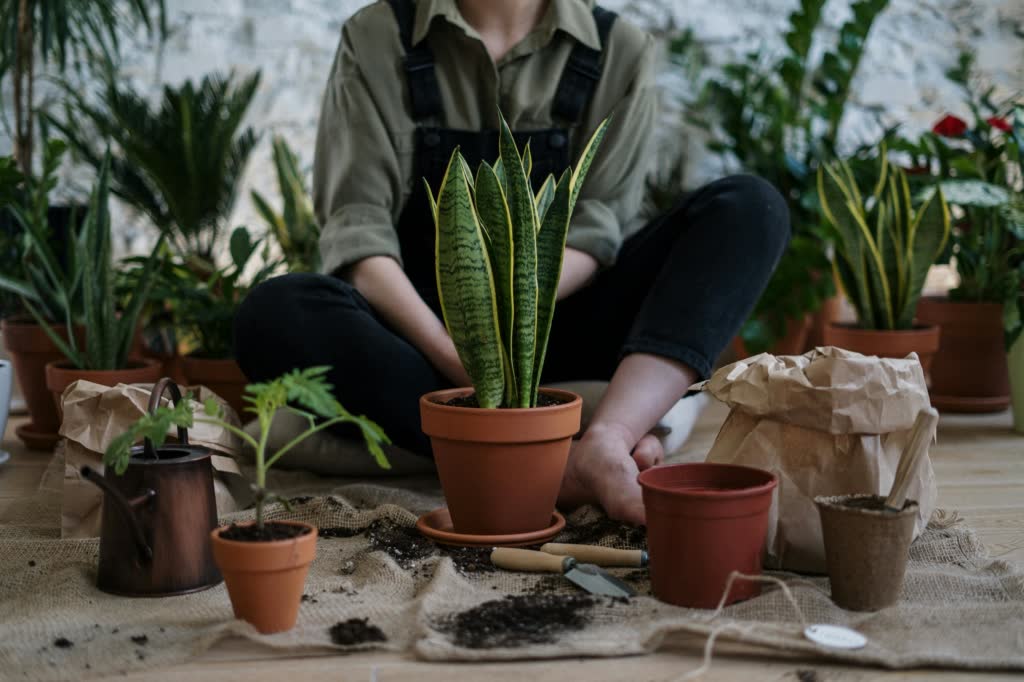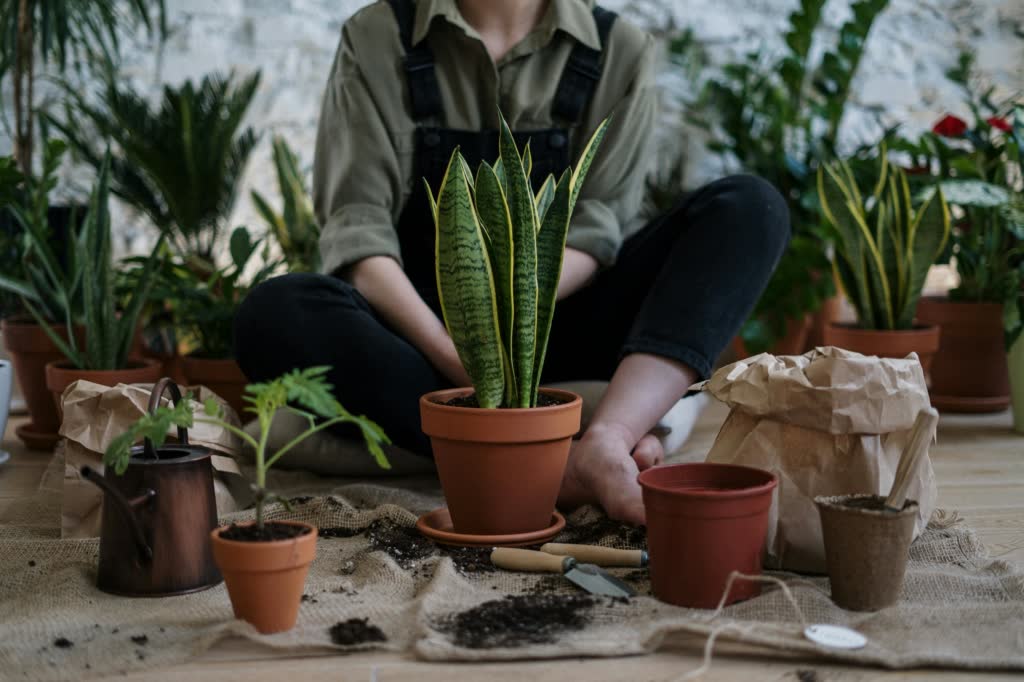
Choosing the right pot size for your plant is crucial for its health and growth. Understanding how the container can impact your plant can make the difference between a thriving plant and one that struggles. In this article I will help you to choose the optimum pot size for your plant, ensuring it has the best chance to grow both strong and healthy.
Why Pot Size Matters
The size of the pot directly affects your plant's growth. A pot that is too small can restrict root growth, limit access to nutrients, and cause the soil to dry out too quickly. In hot conditions, the soil temperature in a small pot can also become quite hot. Conversely, a pot that is too large can lead to overwatering, as the soil retains more moisture than the plant needs, leading to root rot and various other issues.
Therefore, selecting the right pot size is essential to maintaining a healthy balance between soil moisture and temperature, root space, and plant growth.
Factors to Consider When Choosing Pot Size
Plant Type and Growth Habit
Different plants have different root structures and growth habits. For example:
- Shallow-rooted plants like lettuce and herbs do well in smaller pots (6-8 inches deep).
- Deep-rooted plants like tomatoes or carrots need larger, deeper pots (12-18 inches deep).
- Larger Deep-rooted plants like various fruit trees (citrus, avocados etc) will need even larger and deeper pots.
- Spreading plants like strawberries or creeping thyme benefit from wider pots to accommodate their growth.
Current Plant Size
The current size of your plant will also influence the pot size. Two general rules of thumb are for smaller plants; choose a pot that's 2-4 inches (50 cm to 100 cm) larger in diameter than the current root ball of your plant. While for larger plants, choose a pot that is 30% larger than the existing pot. Following these two general ideas will provide enough space for growth without overwhelming the plant with excess soil.

Plant's Future Growth
Consider how much your plant is expected to grow. If you're planting a fast-growing species, you might want to opt for a slightly larger pot to accommodate its future size. However, avoid going too large, as this can lead to the issues discussed above..
Drainage Needs
Proper drainage is crucial for preventing waterlogged soil, which can lead to root rot. Ensure that the pot you choose has adequate drainage holes. Most commercially purchased pots will only have one small drainage hole. If it is possible to safely add additional holes, do so. The size of the pot can also influence how quickly water drains, with larger pots generally retaining more moisture and therefore draining more slowly.
Material of the Pot
The material of the pot can affect how quickly the soil dries out. For example, terracotta pots are porous and allow moisture to evaporate faster, which can be beneficial in humid climates. On the other hand, plastic or ceramic pots retain moisture longer, which might be better for dry environments.

Common Pot Sizes and Their Uses
Here’s a quick reference guide to common pot sizes and the types of plants they’re suitable for:
- 4-inch pots: Ideal for small succulents, herbs, and starter plants.
- 6-inch pots: Suitable for herbs, small flowering plants, and shallow-rooted vegetables.
- 8-inch pots: Good for medium-sized houseplants, like pothos or small ferns.
- 10-inch pots: Best for larger houseplants, small shrubs, and compact vegetables.
- 12-14 inch pots: Perfect for medium to large houseplants, small fruit trees, and large vegetables like tomatoes.
- 16-20 inch pots: Ideal for large shrubs, small trees, and plants with extensive root systems.
Signs That You Need to Repot
Knowing when to repot your plant is just as important as choosing the right pot size. Look out for these signs that your plant may need a larger container:
- Roots are growing out of the drainage holes.
- The plant is top-heavy and frequently tips over.

- Soil dries out very quickly after watering.
- The plant's growth has slowed down despite proper care.
If you notice any of these signs, it’s time to move your plant to a larger pot.
Selecting the right pot size for your plant is essential for its health and growth. By considering factors like plant type, current and future size, drainage needs, and pot material, you can ensure that your plant has the space and environment it needs to thrive. Whether you're repotting a houseplant or starting a new garden, understanding the importance of pot size will help you grow healthy, beautiful plants.
I am an educator and passionate gardener and traveler. Throughout my adult life, gardening has been my passion, therapy, drive and source of purpose. Even as a child I had an intrinsic interest in plants and a desire to understand what makes them grow.
I distinctly remember the moment this began - my family was on one of our regular road trips from Hervey Bay; Australia. We were driving past a field of sugar cane. Dad pulled the car over and we cut a couple of sugar cane stems and brought them home for a treat. To be honest, I didn’t really like the taste, but I did want to try and grow it; and that is exactly what I did. It was then that my fascination, interest and passion for gardening and understanding plants began.
Fast forward a few years and I studied biological sciences and began what would be a 36 year career as a Biology educator. From this, I don’t only love gardening, but I also love helping others learn about gardening. I am also always looking for new ways to develop my own gardening knowledge. I like to think I am truly a life-long learner.
Fundamental to my beliefs about education is that learning is often best done as a part of a community - learning from others, and helping others to learn. It is this type of community that I hope iCultivate will be for its members - a community of gardeners, keen to share their gardening knowledge and wanting to learn about new ways to garden - a community built on the love of gardening.











Get involved!
Comments